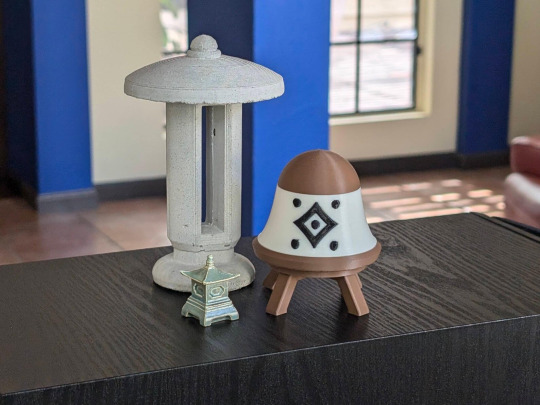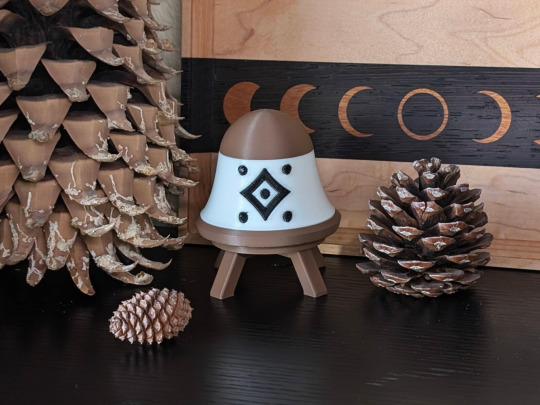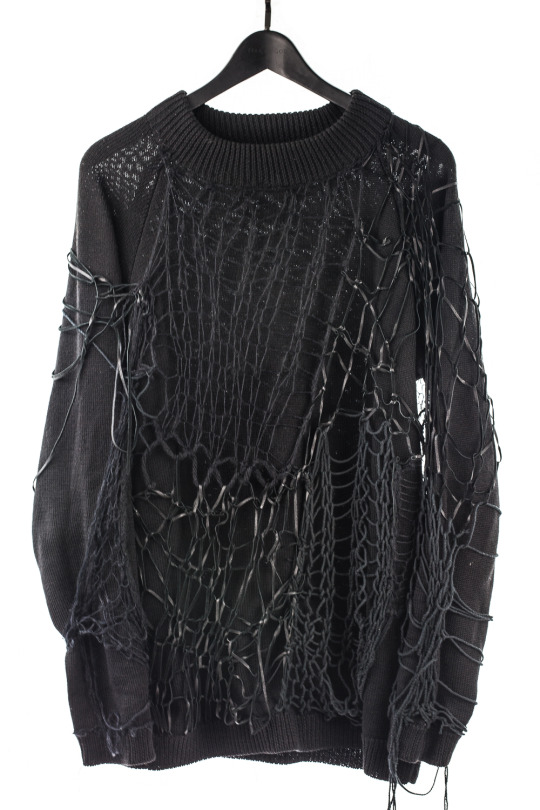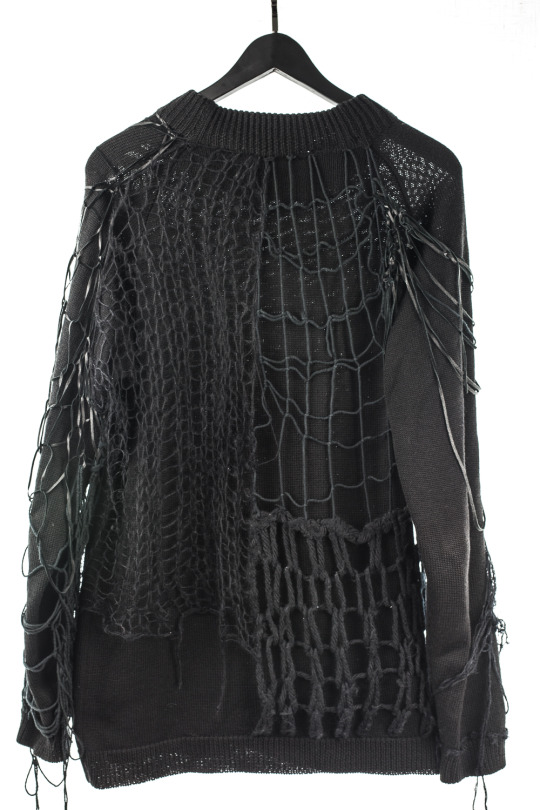#multimaterial
Explore tagged Tumblr posts
Text
Made some 3d printable tokens for Daggerheart, enjoy! :)
7 notes
·
View notes
Text
#good news#environmentalism#science#environment#plastic#plastic pollution#plastic pollution solutions#plastics#green technology#technology
17 notes
·
View notes
Text


I finally finished the (mini) Kakariko lamp! This was the design that launched this whole series, kind of ironic that it's one of the last to be made - it took way more time than I expected to get the curves right, plus the sigil in the center was a pain since it's a single part with the shade (multimaterial printing - no glue). Having it show up clearly while not muddying the area around it was hard. Though, this is the unlit version, without any lights inside - that comes next, and hopefully soon. This one's about 3.5 inches high; I haven't made a "regular" size version yet.
7 notes
·
View notes
Text
Multimaterial 3D printing enables makers to fabricate customized devices with multiple colors and varied textures. But the process can be time-consuming and wasteful because existing 3D printers must switch between multiple nozzles, often discarding one material before they can start depositing another. Researchers from MIT and Delft University of Technology have now introduced a more efficient, less wasteful, and higher-precision technique that leverages heat-responsive materials to print objects that have multiple colors, shades, and textures in one step. Their method, called speed-modulated ironing, utilizes a dual-nozzle 3D printer. The first nozzle deposits a heat-responsive filament and the second nozzle passes over the printed material to activate certain responses, such as changes in opacity or coarseness, using heat.
Read more.
16 notes
·
View notes
Text
21 notes
·
View notes
Text
"Le Laboratoire Multilatéral National" and the Mk 6 Engineering Combat and Maintenance Powersuit
The LMN (Laboratoire Multilatéral National) is nothing short of a titan of R&D. A singular, all encompassing high technologies agency. It serves to aggregate, sort, and task the scientists of Espocita across multiple development projects. These projects range from the sensible, like new GMO strains, advanced steel alloys and safer trains, to the insane, like electro-optical camouflages, warp drives, and wireless brain/machine interfaces.
Their most successful recent project has been the "Miniature Multimaterial Additive Printer" which has seen battlefield deployment on the MK6 Engineering, Combat, and Maintenance Powersuit. The suit lacks armor as a principle, instead focusing on movement and low weight, meaning the suit can access most terrains where fighting is certain. In this role, it is able to print spare parts, execute modifications and replace weapon systems, so long as base materials are available.
However being an engineering rig doesn't mean the mk6 is defenceless, but rather, quite effective in some cases. It gives the Engineer the survivability to get through a hotzone, and work in relative safety in that hotzone. The force multiplication abilities of the frame also let it service heavy equipment like tanks and mechs more effectively.

3 notes
·
View notes
Text
Price: [price_with_discount] (as of [price_update_date] - Details) [ad_1] Product Description Mini Portable Bicycle Pump Pedal Cycling Pumps Straddling Inflator Color: Multi Material: plastic Quality and Imported [ad_2]
0 notes
Text
New 3D printing technique creates unique objects quickly and with less waste
New Post has been published on https://sunalei.org/news/new-3d-printing-technique-creates-unique-objects-quickly-and-with-less-waste/
New 3D printing technique creates unique objects quickly and with less waste
Multimaterial 3D printing enables makers to fabricate customized devices with multiple colors and varied textures. But the process can be time-consuming and wasteful because existing 3D printers must switch between multiple nozzles, often discarding one material before they can start depositing another.
Researchers from MIT and Delft University of Technology have now introduced a more efficient, less wasteful, and higher-precision technique that leverages heat-responsive materials to print objects that have multiple colors, shades, and textures in one step.
Their method, called speed-modulated ironing, utilizes a dual-nozzle 3D printer. The first nozzle deposits a heat-responsive filament and the second nozzle passes over the printed material to activate certain responses, such as changes in opacity or coarseness, using heat.
In speed-modulated ironing, the first nozzle of a dual-nozzle 3D printer deposits a heat-responsive filament and then the second nozzle passes over the printed material to activate certain responses, such as changes in opacity or coarseness, using heat.
Credit: Courtesy of the researchers
By controlling the speed of the second nozzle, the researchers can heat the material to specific temperatures, finely tuning the color, shade, and roughness of the heat-responsive filaments. Importantly, this method does not require any hardware modifications.
The researchers developed a model that predicts the amount of heat the “ironing” nozzle will transfer to the material based on its speed. They used this model as the foundation for a user interface that automatically generates printing instructions which achieve color, shade, and texture specifications.
One could use speed-modulated ironing to create artistic effects by varying the color on a printed object. The technique could also produce textured handles that would be easier to grasp for individuals with weakness in their hands.
“Today, we have desktop printers that use a smart combination of a few inks to generate a range of shades and textures. We want to be able to do the same thing with a 3D printer — use a limited set of materials to create a much more diverse set of characteristics for 3D-printed objects,” says Mustafa Doğa Doğan PhD ’24, co-author of a paper on speed-modulated ironing.
This project is a collaboration between the research groups of Zjenja Doubrovski, assistant professor at TU Delft, and Stefanie Mueller, the TIBCO Career Development Professor in the Department of Electrical Engineering and Computer Science (EECS) at MIT and a member of the MIT Computer Science and Artificial Intelligence Laboratory (CSAIL). Doğan worked closely with lead author Mehmet Ozdemir of TU Delft; Marwa AlAlawi, a mechanical engineering graduate student at MIT; and Jose Martinez Castro of TU Delft. The research will be presented at the ACM Symposium on User Interface Software and Technology.
Modulating speed to control temperature
The researchers launched the project to explore better ways to achieve multiproperty 3D printing with a single material. The use of heat-responsive filaments was promising, but most existing methods use a single nozzle to do printing and heating. The printer always needs to first heat the nozzle to the desired target temperature before depositing the material.
However, heating and cooling the nozzle takes a long time, and there is a danger that the filament in the nozzle might degrade as it reaches higher temperatures.
To prevent these problems, the team developed an ironing technique where material is printed using one nozzle, then activated by a second, empty nozzle which only reheats it. Instead of adjusting the temperature to trigger the material response, the researchers keep the temperature of the second nozzle constant and vary the speed at which it moves over the printed material, slightly touching the top of the layer.
“As we modulate the speed, that allows the printed layer we are ironing to reach different temperatures. It is similar to what happens if you move your finger over a flame. If you move it quickly, you might not be burned, but if you drag it across the flame slowly, your finger will reach a higher temperature,” AlAlawi says.
The MIT team collaborated with the TU Delft researchers to develop the theoretical model that predicts how fast the second nozzle must move to heat the material to a specific temperature.
The model correlates a material’s output temperature with its heat-responsive properties to determine the exact nozzle speed which will achieve certain colors, shades, or textures in the printed object.
“There are a lot of inputs that can affect the results we get. We are modeling something that is very complicated, but we also want to make sure the results are fine-grained,” AlAlawi says.
The team dug into scientific literature to determine proper heat transfer coefficients for a set of unique materials, which they built into their model. They also had to contend with an array of unpredictable variables, such as heat that may be dissipated by fans and the air temperature in the room where the object is being printed.
They incorporated the model into a user-friendly interface that simplifies the scientific process, automatically translating the pixels in a maker’s 3D model into a set of machine instructions that control the speed at which the object is printed and ironed by the dual nozzles.
Faster, finer fabrication
They tested their approach with three heat-responsive filaments. The first, a foaming polymer with particles that expand as they are heated, yields different shades, translucencies, and textures. They also experimented with a filament filled with wood fibers and one with cork fibers, both of which can be charred to produce increasingly darker shades.
The researchers demonstrated how their method could produce objects like water bottles that are partially translucent. To make the water bottles, they ironed the foaming polymer at low speeds to create opaque regions and higher speeds to create translucent ones. They also utilized the foaming polymer to fabricate a bike handle with varied roughness to improve a rider’s grip.
Trying to produce similar objects using traditional multimaterial 3D printing took far more time, sometimes adding hours to the printing process, and consumed more energy and material. In addition, speed-modulated ironing could produce fine-grained shade and texture gradients that other methods could not achieve.
In the future, the researchers want to experiment with other thermally responsive materials, such as plastics. They also hope to explore the use of speed-modulated ironing to modify the mechanical and acoustic properties of certain materials.
0 notes
Text



Raf Simons FW98 “Radioactivity” MultiMaterial Layered Loop Knit
Raf Simons AW98 “Radioactivity” MultiMaterial Layered Knit. One of the earlier, underrated seasons, “Radioactivity” took cues from legendary synth pop group and kraut rock pioneer Kraftwerk. Footage and images available today show runway models walking down the catwalk with bold red button ups similar to what the Kraftwerk group members wore during a performance. Mock neck knit with an intricate and crudely weaved paneled knit layered over the sweater consisting of leather, suede, high gauge wool, mohair, yarn. Long loose fit
1 note
·
View note
Text
Humpday! Join the Livestream this Saturday at 12PM EST for the ERCF build!
https://www.youtube.com/live/V2SLzfp-rSI?si=h5438Pl1NYPBkkh4
#ercf #mmu #multimaterial #voron #leemerie3d #3dprinting #3d #ams
#ender 3#leemerie3d#prusa#tech#voron#x1c#3dprint#fyp#subscribetomychannel#pc build#mark rober#mr beast
0 notes
Text
I think 2024 will have more text musings from me. Idk tho.
But here is one anyways:
The dream would be 3d modeling on pc and producing 3d print works like figurines but painting is legit impossible for me due to health now lol, guess I have to wait until the Statasys PolyJet/BJP patent expires in a decade+, so that consumer level color/transparency/multimaterial printers can become available. $50,000 for the base machine is not affordable lmafo.
Honestly with the rate at which certain tech advances, it truely feels like patents in those specific fields stunt global advancement for decades. Feels criminal.
For things like 3d printers that are able to print with different materials, colors, and transparencies, it could truely save lives and at minimum drastically improve livelihoods, so it is so bizarre that tech like this is gatekept and not shared to be expanded on and innovated on by others.
This is also a problem in the gaming industry, (albeit at less severity, but still ridiculous). Tell me why there was a DECADES long patent on "mini games during loading screens" that was barely even used before it expired? And the nemesis system...
Obviously, patents have a use and can be very important in making sure creators are not taken advantage of or ripped off (in fact it will likely be a saving grace for taking down unethically sourced data for the current scummy unregulated generative ai models out there), but in certain situations like 3d printing it is straight up detrimental gatekeeping that benefits no one.
#text#musings#certified old fart yells at clouds#tell me that 3d printing full color flexible or transparent merch that looks like mold injection quality at home wouldn't be cool as hell.#with the bs 2d ink printers have now with subscriptions and other bs... i am not looking forward#to that monetization model.#designing and wearing 3d printed shoes that accommodate you sounds cool as hell too.#3d printing
1 note
·
View note
Text
0 notes
Text

This 3D printer can watch itself fabricate objects
Computer vision enables contact-free 3D printing, letting engineers print with high-performance materials they couldn’t use before.
With 3D inkjet printing systems, engineers can fabricate hybrid structures that have soft and rigid components, like robotic grippers that are strong enough to grasp heavy objects but soft enough to interact safely with humans. These multimaterial 3D printing systems utilize thousands of nozzles to deposit tiny droplets of resin, which are smoothed with a scraper or roller and cured with UV light. But the smoothing process could squish or smear resins that cure slowly, limiting the types of materials that can be used. Researchers from MIT, the MIT spinout Inkbit, and ETH Zurich have developed a new 3D inkjet printing system that works with a much wider range of materials. Their printer utilizes computer vision to automatically scan the 3D printing surface and adjust the amount of resin each nozzle deposits in real-time to ensure no areas have too much or too little material.
Read more.
13 notes
·
View notes
Text
Governo adia cobrança de taxa sobre embalagens de alumínio para janeiro
O Governo voltou a adiar a entrada em vigor do pagamento de uma taxa de 30 cêntimos sobre as embalagens de alumínio de uso único para refeições, segundo uma portaria publicada em Diário da República.

Inicialmente prevista para 1 de janeiro deste ano, o arranque da cobrança desta taxa sobre as embalagens de alumínio ou multimaterial com alumínio nas refeições prontas a consumir foi adiada ainda em 31 de dezembro 2022 para o dia 01 de setembro (sexta-feira). Agora, a data de entrada em vigor voltou a ser revista, passando para 01 de janeiro de 2024, face às dificuldades transmitidas pelos operadores económicos.
“Tendo em conta os constrangimentos manifestados por diversos agentes económicos, bem como a necessidade de alargar o âmbito de aplicação desta portaria a outros materiais, (…) considera-se essencial assegurar, no imediato, a prorrogação da produção de efeitos para a aplicação da contribuição sobre as embalagens de utilização única de alumínio ou multimaterial com alumínio”, lê-se na portaria.
A taxa de 30 cêntimos está, porém, a ser já aplicada desde julho de 2022 sobre as embalagens de plástico de utilização única para refeições prontas a consumir. Na origem desta medida está, segundo a portaria, “a necessidade de aprofundar o caminho de transição para uma economia circular, promovendo a redução sustentada do consumo de embalagens de utilização única e a consequente redução do volume de resíduos gerados”.
O diploma, assinado pelos secretários de Estado dos Assuntos Fiscais e do Ambiente, Nuno Félix e Hugo Pires, respetivamente, entra em vigor esta quarta-feira.
0 notes
Text
Multimaterial 3D Printer Developed For Creating Flexible Devices
http://dlvr.it/SsPmtQ
0 notes